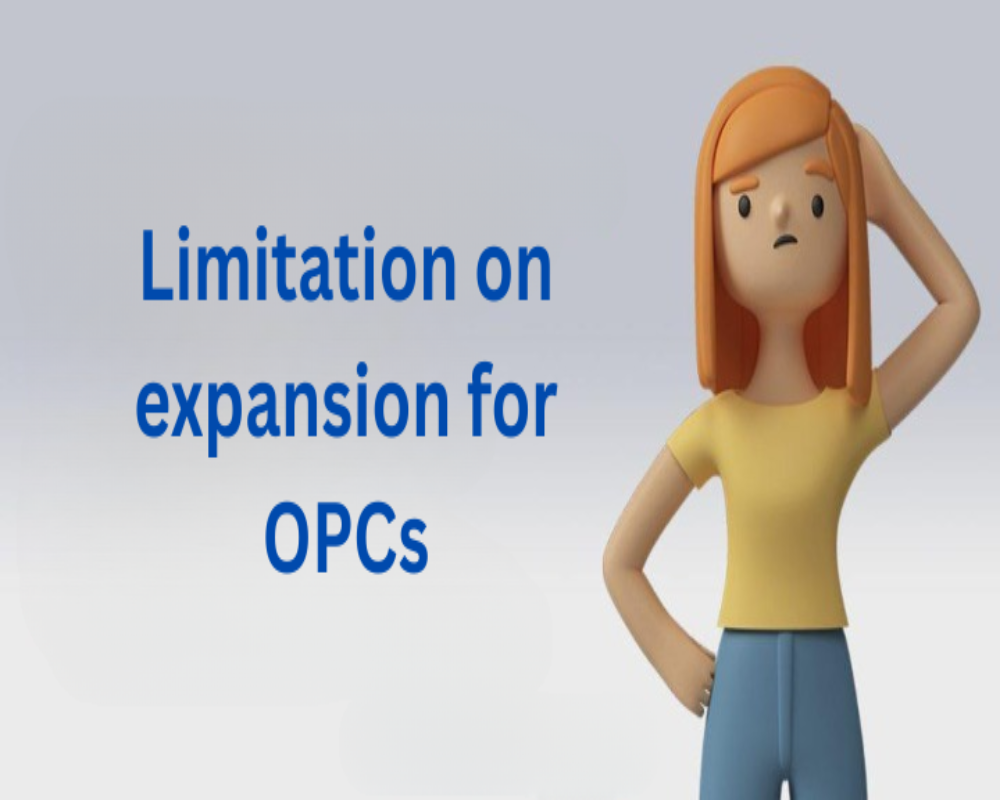Introduction
The One Person Company (OPC) model was introduced under the Companies Act, 2013 to facilitate formal business registration for solo entrepreneurs with limited liability and a corporate identity. It is designed to encourage small-scale enterprise creation while maintaining manageable compliance requirements. However, the structure of an OPC includes certain limitations on expansion that define its operational boundaries. These constraints ensure that OPCs remain suitable for individual ownership and smaller-scale businesses. This article explores the key limitations on expansion for OPCs and their impact on long-term business scalability.
Single Ownership Restriction
An OPC can have only one member at any point in time. This is the most fundamental limitation, as it prevents the inclusion of partners, co-founders, or shareholders. As the business grows and requires external equity participation or collaborative ownership, this restriction becomes a significant barrier to expansion.
Prohibition on Issuance of Shares
Unlike private or public limited companies, OPCs cannot issue shares to the public or raise capital through equity investment. This limits the ability to attract venture capital, private equity, or angel investments, making it difficult to fund large-scale growth, product diversification, or geographic expansion.
Turnover and Capital Thresholds
Under Rule 6 of the Companies (Incorporation) Rules, 2014, an OPC must mandatorily convert into a private or public limited company if:
- The paid-up share capital exceeds ₹50 lakh, or
- The annual turnover exceeds ₹2 crore in any financial year.
This threshold-based restriction limits the operational size of OPCs. Businesses showing signs of significant growth are expected to move into broader corporate structures.
Limited Management Structure
An OPC can have only one director at the time of incorporation, though it may appoint up to 15 directors later. Despite this flexibility, the single-member structure often means that expansion decisions, delegation of responsibilities, and long-term strategic planning remain constrained due to limited leadership bandwidth.
Restriction on Certain Business Activities
OPCs are prohibited from carrying out certain financial activities, such as:
- Non-Banking Financial Company (NBFC) operations
- Investment in securities of other companies
This prevents OPCs from entering capital-intensive sectors or engaging in high-growth investment-driven businesses that could otherwise serve as expansion platforms.
Geographical and Operational Constraints
As a single-member entity, an OPC may face logistical and managerial difficulties in expanding operations to multiple locations or regions. Without the ability to share ownership or establish partnerships, scaling operations across geographic territories becomes challenging in terms of oversight and resource deployment.
No Public Fundraising
OPCs are not allowed to list on stock exchanges or raise funds via Initial Public Offerings (IPOs). This effectively bars them from public market participation and restricts access to a major source of capital used by companies aiming for large-scale expansion.
Limitation on Successor Involvement
Although OPCs include a nominee provision to take over in case of death or incapacity of the member, there is no scope for involving multiple successors or co-owners simultaneously. This restricts multi-generational business planning and collaborative ownership, which is often essential for long-term scalability.
Conclusion
While One Person Companies offer a simplified route to formal business ownership for solo entrepreneurs, their structural framework includes several limitations on expansion. From restrictions on ownership and capital-raising to regulated turnover and activity boundaries, OPCs are best suited for small businesses with limited operational reach. Entrepreneurs with aspirations to grow beyond these limits must be prepared to convert their OPC into a private or public limited company. Understanding these constraints is essential for planning sustainable business development and ensuring legal compliance as the enterprise evolves.
Hashtags
#OPCLimitations #ExpansionChallenges #BusinessGrowth #OPCRegulations #Entrepreneurship #SmallBusiness #LimitedLiability #CompanyStructure #Startups #BusinessStrategy #LegalFramework #CorporateGovernance #OPCInsights #BusinessDevelopment #EntrepreneurTips #Compliance #MarketExpansion #BusinessLimitations #OPCAdvantages #GrowthStrategies


0 Comments